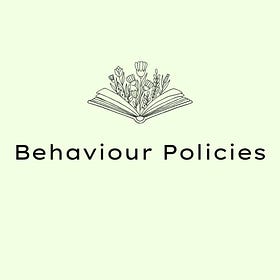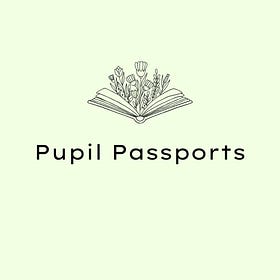🌿4 Regulating Routines You Can Try This Week
Classroom Routines That Support Regulation: 4 Simple Strategies to Help Children Feel Safe and Ready to Learn
👋 Welcome to SEMH Education
I post weekly strategies and insights for professionals supporting children with social, emotional, and mental health (SEMH) needs.
I’m Kieran, a former teacher and current Youth Justice Education Officer. Each week, I share evidence-informed tools, practical advice, and real-world reflections to help you create safer, more inclusive learning environments.
📌 In this post: Routines you can implement tomorrow to help keep your class regulated!
💬 Like what you’re reading? Tap the ♥️ or leave a comment, it helps others find this too!
📥 Not subscribed yet? Join 450+ others for weekly SEMH support, straight to your inbox.
Helping pupils feel safe, settled and ready to learn, one small structure at a time.
Transitions are hard for all of us, but they can be especially dysregulating for children with SEMH needs, neurodivergence, trauma histories, or insecure attachments. For these children, every transition brings uncertainty. Every change in activity, space, or adult can spike cortisol and activate survival responses.
As educators, we can't always control the chaos of the day. But we can control the structure we offer. Routines are a powerful tool, not just for classroom management, but for regulation, belonging, and brain readiness.
This week, I’m sharing 4 easy, high-impact regulating routines you can start using right away, all rooted in relational practice, trauma-informed principles, and practical classroom reality.
1. 🛎️ The Transition Signal: “We’re shifting, and I’m here with you.”
Why it matters:
Transitions between tasks or rooms (especially in secondary schools) can be a sensory and emotional minefield. Without structure, the brain remains in alert mode, making it harder to regulate, focus, or feel safe.
Try this routine:
✅ Use a consistent non-verbal transition cue, e.g. a sound chime, a soft clap, or music snippet (like lo-fi or instrumental).
✅ Pair it with clear visual prompts on the board or using a “Now / Next” strip.
✅ Give countdowns or “preview” the next space:
🗣 “We’ve got 2 more minutes here. Then we’re moving to Science with Miss Larkin.”
✅ Narrate regulation:
“I can feel the energy rising, let’s all take 3 grounding breaths before we walk.”
Top Tip for moving rooms:
Assign ‘regulation buddies’ or use a calming object (e.g. a regulation stone (not an actual stone! Just something a child can hold whilst transitioning) or sensory band) to carry between spaces.
📌 Linked to: DfE Behaviour in Schools guidance, on the importance of predictable routines for emotional safety and behaviour consistency.
2. 🌞 Morning Check-Ins & Maslow’s Basics
Why it matters:
Children can't access learning if their basic needs aren’t met. Tired? Hungry? Dysregulated from a rough morning? Maslow's hierarchy tells us: without safety and belonging, cognitive learning is out of reach.
Try this routine:
✅ Greet each pupil by name at the door (or as they enter).
✅ Use visual check-in tools (feelings thermometer, colour zones, emojis on a lanyard).
✅ Ask:
“Did you get some food this morning?” or
“Need anything before we get going?”
✅ Keep oat bars, fruit, or toast discreetly available for those who missed breakfast club.
✅ Give 5 quiet minutes to settle, drawing, journaling, music, or quiet chats.
Need a more formal start?
Try a ‘soft start grid’ (e.g. “How are you feeling today?” “What’s one thing you’re proud of?” “What are you looking forward to?”)
3. 🌳 After Break, PE or Lunchtime: Reset the Nervous System
Why it matters:
These transition points are prime times for dysregulation, unstructured space, unpredictable social dynamics, physical exertion, or playground conflicts. Jumping straight into Maths or Reading is a recipe for dysregulated behaviours.
Try this routine:
✅ “Reset Time” 3–5 minutes of predictable, regulating activity:
Body scan
Chair yoga or stretching
Breathing square or finger breathing
Rehydration / movement break
✅ Follow with a co-regulating prompt:
“Before we dive in, let’s each share something we noticed outside / one thing we’re ready for.”
Bonus: Let pupils choose their preferred regulation tool from a small menu, this helps builds autonomy and self-awareness.
Have a look at my Down-Regulation post here:
😴 Down-Regulation Activities for All Children
Down-regulation activities help children transition from high-energy, anxious, or dysregulated states into calm, focused, and learning-ready states.
These activities are useful for all pupils, and particularly beneficial for children with SEMH needs, ADHD, Autism, or sensory processing differences, as they support emotional regulation, impulse control, and overall well-being.
4. 🌅 End-of-Day Wind-Down: Reflect & Regulate
Why it matters:
The end of the day often becomes chaotic, with rushed reminders, last-minute handouts, and stressed farewells. But closing the day intentionally helps children regulate, reflect, and carry safety into their evening.
Try this routine:
✅ Use a “Daily Wrap-Up”:
One thing I learned
One thing I felt
One thing I’m proud of
✅ Follow with a regulating close:Calm music
Guided visualisation (“imagine your calmest place…”)
Breathing with a glitter jar or bubble animation
✅ Give relational closure:
“I loved hearing your ideas today, Kai. I’ll see you tomorrow.”
Top Tip:
For classes that struggle with verbal reflection, use colour-coded exit cards or quiet drawing time.
🌟 Final Thought: Routines Build Safety, Not Control
When routines are done with children, not to them, they offer more than structure. They offer certainty. Connection. Co-regulation.
Whether you’re leading a nurture group, a Year 10 class, or a KS2 class with complex needs, these routines don’t have to be perfect. But when they’re predictable, relational, and embedded into your day, they become a regulating anchor.
Start with just one this week. Observe what changes. Adapt it. Reflect. And remember, every calm, connected moment you create matters more than you think.
📬 Did You Miss These?
🔬Rethinking Behaviour Policies: Why a Trauma-Informed Approach is Essential📝
✅ Why traditional policies are failing in real schools (case studies and evidence).
✅ How to implement trauma-informed alternatives that improve behaviour and emotional well-being.
✅ A step-by-step guide for educators to shift from control-based to support-based approaches.
🛂 The Pupil Passport
Often overlooked or misunderstood as something just for children with diagnosed SEND. Pupil Passports are one of the most effective and inclusive tools a school can embed. They’re short, accessible documents, ideally no more than one side of A4, that summarise a pupil’s needs, preferences, strengths, and support strategies. And they work brilliantly for all learners.
🚀 Up-Regulation Activities
Up-regulation activities help children transition from low-energy, disengaged, or sluggish states into alert, focused, and learning-ready states.
These activities are useful for all pupils, particularly for children with SEMH needs, ADHD, Autism, or sensory processing differences, as they support focus, motivation, and overall engagement in learning.






